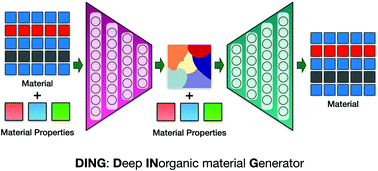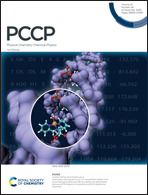Deep learning enabled inorganic material generator†
Abstract
Recent years have witnessed utilization of modern machine learning approaches for predicting the properties of materials using available datasets. However, to identify potential candidates for material discovery, one has to systematically scan through a large chemical space and subsequently calculate the properties of all such samples. On the other hand, generative methods are capable of efficiently sampling the chemical space and can generate molecules/materials with desired properties. In this study, we report a deep learning based inorganic material generator (DING) framework consisting of a generator module and a predictor module. The generator module is developed based on conditional variational autoencoders (CVAEs) and the predictor module consists of three deep neural networks trained for predicting the enthalpy of formation, volume per atom and energy per atom chosen to demonstrate the proposed method. The predictor and generator modules have been developed using a one-hot key representation of the material composition. A series of tests were done to examine the robustness of the predictor models, to demonstrate the continuity of the latent material space, and its ability to generate materials exhibiting target property values. The DING architecture proposed in this paper can be extended to other properties based on which the chemical space can be efficiently explored for interesting materials/molecules.

- This article is part of the themed collection: Emerging AI Approaches in Physical Chemistry


 Please wait while we load your content...
Please wait while we load your content...